Emil Tom Frei III, MD (1924-2013)
CC BY-NC-ND 4.0 · Indian J Med Paediatr Oncol 2014; 35(01): 111-116
DOI: DOI: 10.4103/0971-5851.133737
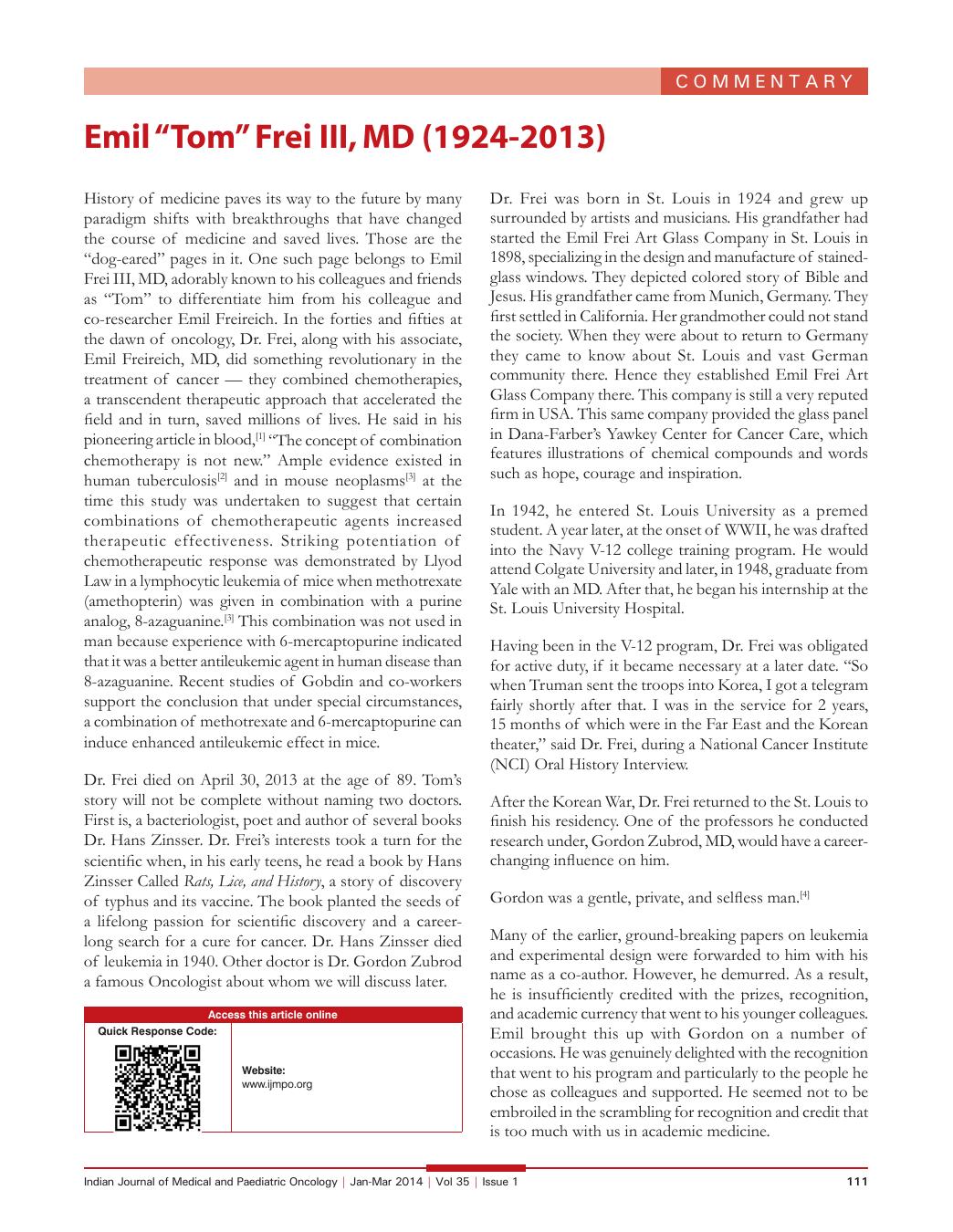
|
Publication History
Article published online:
19 July 2021
© 2014. Indian Society of Medical and Paediatric Oncology. This is an open access article published by Thieme under the terms of the Creative Commons Attribution-NonDerivative-NonCommercial-License, permitting copying and reproduction so long as the original work is given appropriate credit. Contents may not be used for commercial purposes, or adapted, remixed, transformed or built upon. (https://creativecommons.org/licenses/by-nc-nd/4.0/.)
Thieme Medical and Scientific Publishers Pvt. Ltd.
A-12, 2nd Floor, Sector 2, Noida-201301 UP, India
History of medicine paves its way to the future by many paradigm shifts with breakthroughs that have changed the course of medicine and saved lives. Those are the “dog-eared” pages in it. One such page belongs to Emil Frei III, MD, adorably known to his colleagues and friends as “Tom” to differentiate him from his colleague and co-researcher Emil Freireich. In the forties and fifties at the dawn of oncology, Dr. Frei, along with his associate, Emil Freireich, MD, did something revolutionary in the treatment of cancer — they combined chemotherapies, a transcendent therapeutic approach that accelerated the field and in turn, saved millions of lives. He said in his pioneering article in blood,[1] “The concept of combination chemotherapy is not new.” Ample evidence existed in human tuberculosis[2] and in mouse neoplasms[3] at the time this study was undertaken to suggest that certain combinations of chemotherapeutic agents increased therapeutic effectiveness. Striking potentiation of chemotherapeutic response was demonstrated by Llyod Law in a lymphocytic leukemia of mice when methotrexate (amethopterin) was given in combination with a purine analog, 8-azaguanine.[3] This combination was not used in man because experience with 6-mercaptopurine indicated that it was a better antileukemic agent in human disease than 8-azaguanine. Recent studies of Gobdin and co-workers support the conclusion that under special circumstances, a combination of methotrexate and 6-mercaptopurine can induce enhanced antileukemic effect in mice.
Dr. Frei died on April 30, 2013 at the age of 89. Tom's story will not be complete without naming two doctors. First is, a bacteriologist, poet and author of several books Dr. Hans Zinsser. Dr. Frei's interests took a turn for the scientific when, in his early teens, he read a book by Hans Zinsser Called Rats, Lice, and History, a story of discovery of typhus and its vaccine. The book planted the seeds of a lifelong passion for scientific discovery and a career-long search for a cure for cancer. Dr. Hans Zinsser died of leukemia in 1940. Other doctor is Dr. Gordon Zubrod a famous Oncologist about whom we will discuss later.
Dr. Frei was born in St. Louis in 1924 and grew up surrounded by artists and musicians. His grandfather had started the Emil Frei Art Glass Company in St. Louis in 1898, specializing in the design and manufacture of stained-glass windows. They depicted colored story of Bible and Jesus. His grandfather came from Munich, Germany. They first settled in California. Her grandmother could not stand the society. When they were about to return to Germany they came to know about St. Louis and vast German community there. Hence they established Emil Frei Art Glass Company there. This company is still a very reputed firm in USA. This same company provided the glass panel in Dana-Farber's Yawkey Center for Cancer Care, which features illustrations of chemical compounds and words such as hope, courage and inspiration.
In 1942, he entered St. Louis University as a premed student. A year later, at the onset of WWII, he was drafted into the Navy V-12 college training program. He would attend Colgate University and later, in 1948, graduate from Yale with an MD. After that, he began his internship at the St. Louis University Hospital.
Having been in the V-12 program, Dr. Frei was obligated for active duty, if it became necessary at a later date. “So when Truman sent the troops into Korea, I got a telegram fairly shortly after that. I was in the service for 2 years, 15 months of which were in the Far East and the Korean theater,” said Dr. Frei, during a National Cancer Institute (NCI) Oral History Interview.
After the Korean War, Dr. Frei returned to the St. Louis to finish his residency. One of the professors he conducted research under, Gordon Zubrod, MD, would have a career-changing influence on him.
Gordon was a gentle, private, and selfless man.[4]
Many of the earlier, ground-breaking papers on leukemia and experimental design were forwarded to him with his name as a co-author. However, he demurred. As a result, he is insufficiently credited with the prizes, recognition, and academic currency that went to his younger colleagues. Emil brought this up with Gordon on a number of occasions. He was genuinely delighted with the recognition that went to his program and particularly to the people he chose as colleagues and supported. He seemed not to be embroiled in the scrambling for recognition and credit that is too much with us in academic medicine.
This was because he was answering to a higher authority, for Gordon was a deeply religious man. He combined his religious and scientific philosophies comfortably and effectively. He was a man of absolute honesty and integrity. Only those of Emil and his colleagues who were close to him were privy to discussions of philosophy and religion. His favorite saint was Francis of Assisi and his favorite poem was a prayer/poem, and now a hymn, by St. Francis. It goes to the heart of the Christian ethos. It reads:
Lord, make me an instrument of your peace,
- Where there is hatred, let me sow love,
- Where there is injury, pardon,
- Where there is doubt, faith,
- Where there is darkness, light,
- Where there is sadness, Joy.
Oh Divine Master, grant that I may not so much seek
- To be consoled, as to console,
- To be understood, as to understand,
- To be loved, as to love,
- For it is in giving that we receive;
- It is in pardoning that we are pardoned;
- It is in dying that we are born to eternal life.
Gordon Zubrod loved and lived this prayer/poem, as family, friends and colleagues will surely recognize. In his professional life and particularly for patients, current and future, he sought to shine the light of understanding and knowledge into the dark and fearful recesses of cancer; to provide faith in God, but also faith that man can, with his God-given faculties, solve the cancer scourge.
“Dr. Zubrod took a position as the Clinical Director of the NCI and he asked me to join him, which I did in April 1955,” said Dr. Frei.
Soon after arriving at NCI, Dr. Frei met Emil Freireich, MD. Although polar opposites in countenance — Dr. Frei was reserved, cool, contemplative, to Freireich's intellectual flamboyance — the two “Emils” would become the closest of associates.
In JCO.[4] Tom wrote:
“In 1952, Dr. Gordon Zubrod, with three other staff members from Johns Hopkins, moved to St. Louis University to start a full-time department of medicine. I joined them as a resident in medicine. It was an extraordinary year. The house staff came alive in patient care, teaching and clinical research. We conducted clinical case studies, often an actual clinical trial and took a clinical observation to the laboratory for modeling and study.
This experience was made possible by the senior staff, most particularly Dr. Zubrod, who, despite job-threatening pressure, seemed always to have the time and interest, indeed enthusiasm, for our projects, in addition to his scientific insights, experience and authority.
That job-threatening pressure was a power struggle within the medical school that culminated in the resignation of the Hopkins group and subsequently, of most of the resident staff. Gordon accepted the position of Clinical Director of the NCI and Emil followed him there. Although they did not know it in 1955, we were in the right place at the right time.”
In the mid-1940s, another significant history was in the making, Sidney Farber was a pathologist at Boston's Children's Hospital. Medicine was poised for a post-war boom in research that would revolutionize the treatment of many diseases.
For children and adults with leukemia, however, the prognosis was as grim as it had been when the disease was first described in 1845: Death, often painful, usually within weeks of diagnosis.
Leukemia was a symbol of medicine's longstanding powerlessness against many diseases. There was essentially nothing, other than a brief respite with cortisone therapy that doctors could offer young leukemia patients.
Farber felt differently.[5] Leukemia is a disease of the white blood cell-making tissue of the bone marrow. Studies during World War II had shown that pernicious anemia and tropical anemia — both caused when bone marrow fills with immature cells called blasts — could be cured relatively easily with vitamin B12 and folic acid, respectively.
Farber believed a similar solution could be achieved for leukemia. He knew that folic acid stimulates the growth and maturation of bone marrow. If a drug could be found that chemically blocks folic acid, he reasoned, it would shut down the production of the abnormal marrow associated with leukemia.
As luck would have it, the pharmaceutical manufacturer Lederle (synthesized in consultation with Farber by Yellapragada Subbarao from Andhra Pradesh) was testing just such a drug, called Aminopterin. In November 1947, Farber tried the drug on a group of 16 children who were seriously ill with leukemia. Temporary remissions were achieved in 10 of them.
Farber reported these results in the June 3, 1948, issue of the New England Journal of Medicine. Instead of acclaim and acceptance, however, many in the scientific community reacted to the news with a mixture of disbelief and resistance.
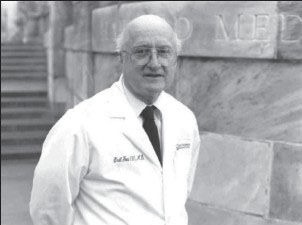
| Emil Frei III
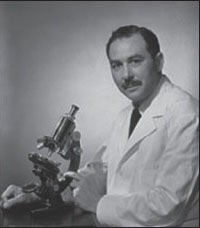
| Sidney
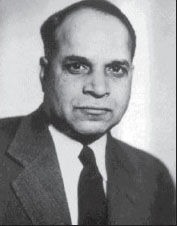
| Yellapragada
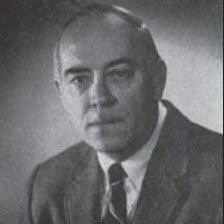
| Llyod W. Law
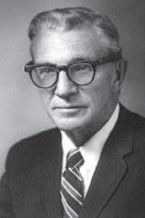
| Gordon Zubrod
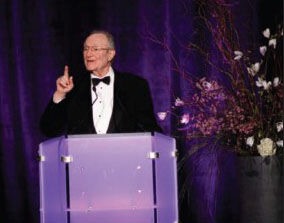
| Emil J. Freirich
Backed by a robust Federal government grant, the NCI was the right place to be for adventurous researchers. Drs. Frei and Freireich had everything they needed: A new clinic, lots of empty beds, a vast laboratory and the enthusiastic support of the Institute's Director, Dr. Zubrod. The two researchers decided to focus their clinical activities on acute lymphocytic leukemia (ALL) term in children. Asked why they chose leukemia, Dr. Frei said, “There were several reasons. One is that Dr. Jim Holland, who had been there before us, started the program in leukemia, so we inherited his patients, if you will.”
Frei was one of the founders of the Acute Leukemia Group B, which later evolved into the Cancer and Leukemia Group B. He served as the group chair for 16 years, from 1956 to 1963 and again from 1981 to 1990.
At the time, scientists knew very little about the biochemical and physiological processes of normal and cancer cells or the role of genes in controlling the pathways of metabolism. Anti-leukemic drugs were among the first to be tested because animal models were available. Early studies initiated in the laboratory of Lloyd Law at the NCI, a unit of the National Institutes of Health (NIH), involved the use of an inbred mouse strain (DBA/2) originally obtained from The Jackson Laboratories in Bar Harbor, Maine. This mouse strain was genetically pre-disposed to develop cancer. When Law painted the skins of these mice with a carcinogen, the mice developed lymphocytic leukemia within 2 to 3 months. He then collected fluid from the peritoneal cavity of the mice and grew the lymphoblastic cells in vitro, labeling those L12l0 cells (L was for Law). This cell line has been and still is extensively used in cytotoxicity assays for screening chemotherapeutic compounds before administering them to animals.[6,7]
Additional studies showed that leukemic mice given multiple treatments of 6-MP eventually developed cells that were resistant to the drug. Fortunately, further mouse studies in Law's laboratory showed that treatment with another drug readily killed the resistant cells. Drug resistance to one drug could be overcome by the use of another drug. From these preclinical studies, the concept of combination chemotherapy was developed. Law communicated his successful leukemia treatment regimen to two NCI clinician-investigators, Emil J. Freireich and Emil Frei, who worked in NCI's chemotherapy program. In 1962, their collaboration led to the development of a regimen to treat childhood leukemia patients with a combination of four drugs.[8]
Working on limited scientific “leads” in ALL, Drs. Frei and Freireich attempted to sort out the “chaos in the field” at the time, which was largely a compilation of anecdotes; prospective experimental designs were lacking. At the time, there were two agents — 6-mercaptopurine and methotrexate — that showed activity in ALL. At the insistence of Dr. Zubrod, the two young researchers wrote protocols and defined what complete response was in advance, thus defining how to proceed tactically.
It was a watershed event in experimental trial design; however, not without controversy. Dr. Frei explained, “It was controversial because it was felt that we were making patients fit a protocol, whereas you should instead fit the protocol to the patient. It sounds like a compelling argument, but if you don’t really know what you’re doing, you need to have a prospective protocol that asks a question and gets an answer.”
Within a year, Dr. Frei was named Chief of NCI's Leukemia Section and later, Chief of Medicine. Frustrated by the short-term remissions achieved in ALL that they were seeing with single-drug therapies, Drs. Frei, Freireich and Holland began testing combinations of two or more agents to attack the various aspects of leukemia cells’ growth. Testing ideas through controlled experimentation requires a thirst for innovation and change, often in the face of a stubborn status quo. Dr. Frei and his colleagues persevered, marshaling in a paradigm shift in oncology therapeutics: Combination chemotherapy term.
The team also worked on the difficult problem of chemotherapy-related bleeding by demonstrating that the infusion of platelets would allow larger, more effective doses of chemotherapy to be delivered safely.
In 1965, Dr. Frei moved to The University of Texas MD Anderson Cancer Center in Houston, where he served as Associate Director of Clinical Research and Chair of the Department of Experimental Therapeutics. He joined Dana-Farber Cancer Institute in 1972, serving as Physician-in-Chief, succeeding the Institute's founder, Sidney Farber, MD, who died later that same year. Just 1 year later, Dr. Frei was named Dana-Farber's Director and Professor of Medicine at Harvard Medical School.
Dissatisfied with the short-term ALL remissions produced by single-drug therapies, Drs. Frei, Freireich, James Holland, MD, and others began testing combinations of two or more agents to attack multiple aspects of leukemia cells’ growth. The research was driven by Dr. Frei's ability to see promise where others saw discouragement. When Dr. Frei and his colleagues began these combinations in patients, only a few were cured. Undeterred, he found lessons in these survivors that could improve therapies in the next round of trials. He demanded the same single-mindedness in those he worked with. The Frei-Freireich team also tackled the problem of chemotherapy-induced bleeding and showed that infusions of blood platelets allowed chemotherapy to be given safely in larger, more effective doses. Today, combination chemotherapy and platelet transfusions result in complete and permanent cures for three of every four children with ALL. The method is credited as a very significant advance in saving the lives of patients with cancer.
Dr. Frei moved to the M.D. Anderson Cancer Center in Houston in 1965, where he served as associate scientific director of Clinical Research and chaired the Department of Experimental Therapeutics. In 1972, he joined Dana-Farber as physician-in-chief, succeeding the Institute's founder, Sidney Farber, MD. In 1973, he became director of Dana-Farber and professor of Medicine at Harvard Medical School.
With Dana-Farber colleagues Arthur Skarin, MD, and George Canellos, MD, he developed a therapy for adults with non-Hodgkin lymphoma — one of the first chemotherapy regimens to produce a significant cure rate for the disease. He joined fellow Dana-Farber researchers in initiating the use of chemotherapy, surgery and radiation therapy as a primary treatment for osteogenic sarcoma, a bone cancer of young adults. In the mid-1970s, he and his associates developed and tested drug combinations that boosted survival rates for breast cancer patients. He also worked with Dana-Farber investigators to pioneer the use of bone marrow transplants for various types of cancers.
Under Dr. Frei's stewardship, Dana-Farber became one of the world's premier centers for cancer care and research in children and adults. Dana-Farber's staff increased from 150 at his arrival to 900 by the end of the decade.
“Tom Frei was one of a handful of physicians who developed combination chemotherapy for cancer and produced the first cures of childhood leukemia,” said David Nathan, MD, president of Dana-Farber from 1995 to 2000. “His was a massive contribution to medicine. Patients and trainees will remember him with deep respect.”
For a generation of workers in the Longwood Medical Area, Dr. Frei was a familiar sight, pedaling his bike to and from Dana-Farber. His sense of humor is legendary at Dana-Farber.
He most recently lived in Chicago. Dr. Frei was married to Elizabeth (Smith) Frei from 1948 until her death in 1986. He later was married to Adoria (Brock) Frei from 1987 until her death in 2009. Dr. Frei is survived by his five children, Mary, Emil (and his wife, Lauren), Alice, Nancy, and Judy (and her husband, Larry Howe) and by 10 grandchildren.
In tribute, Dana-Farber President Edward J. Benz, Jr., MD, said, “This approach has led to cures in many patients with cancer. The majority of patients with certain forms of childhood leukemia, Hodgkin disease, testicular cancer and some other cancers can now expect to live long, high-quality lives because of his contributions.”
Dr. Frei published more than 500 papers in scientific and professional journals and was the recipient of numerous awards and honors. In 1972, he received the Lasker-DeBakey Clinical Medical Research Award from the Lasker Foundation “for his outstanding contribution in application of the concept of combination chemotherapy for lymphoma and acute adult leukemia.” Other awards included the Jeffrey A. Gottlieb Memorial Award (1978); NIH Distinguished Alumni Award (1990); Fellow, American Academy of Arts and Sciences (1999); Pollin Prize for Pediatric Research (2003); and AARC Lifetime Achievement Award (2004).
Dr. Frei described two types of clinical cancer researchers, namely “investigators” versus “discoverers.”[9] The investigators proceed in a very orderly fashion, are esteemed by their peers, typically succeed (at least in answering the often rather ordinary question being addressed by their work), but produce, at most, single step advances and don’t create new paradigms. Discoverers, on the other hand, follow a path of inquiry, which often seems disordered, tend not to be esteemed by their peers, often fail, but, on occasions where they do succeed, produce multi-step advances and create new paradigms. Dr. Frei's point was that the clinical oncology research establishment would be well-advised to be more supportive of the work of discoverers.
Since that 1981 speech, the best example of discovery-oriented clinical research comes from gastroenterology — the central role of bacterial infection (Helicobactor pylori) in peptic ulcer disease. We’ve had some breakthroughs of lesser magnitude in oncology: Anti-Her2 treatment of breast cancer, anti-CD20 in lymphatic neoplasms, tyrosine kinase inhibitors, etc.
Dr. Frei moved to the M.D. Anderson Cancer Center in Houston in 1965, where he served as associate scientific director of Clinical Research and chaired the Department of Experimental Therapeutics. In 1972 he joined Dana-Farber as physician-in-chief, succeeding the Institute's founder, Sidney Farber, MD. In 1973, he became director of Dana-Farber and professor of Medicine at Harvard Medical School.
With Dana-Farber colleagues Arthur Skarin, MD and George Canellos, MD, he developed a therapy for adults with non-Hodgkin lymphoma, one of the first chemotherapy regimens to produce a significant cure rate for the disease. He joined fellow Dana-Farber researchers in initiating the use of chemotherapy, surgery and radiation therapy as a primary treatment for osteogenic sarcoma, a bone cancer of young adults. In the mid-1970s, he and his associates developed and tested drug combinations that boosted survival rates for breast cancer patients. He also worked with Dana-Farber investigators to pioneer the use of bone marrow transplants for various types of cancers.
Under Dr. Frei's stewardship, Dana-Farber became one of the world's premier centers for cancer care and research in children and adults. Dana-Farber's staff increased from 150 at his arrival to 900 by the end of the decade.
Even still, in a career as lush with accomplishments, awards, positions, and publications as Dr. Frei's, it was his patients that mattered most. His work helped bring about the first complete cures for pediatric leukemia patients and led to more effective treatments for adult malignancies ranging from breast cancer to bone cancer. In his early days working in childhood leukemia, when the outcomes were still grim, he remarked, “Children are a challenge and also a joy to work with.” That he found joy in caring for desperately ill-children is what his colleagues, friends, and patients will best remember him for.
In tribute, Dana-Farber President Edward J. Benz, Jr., MD, said, “This approach has led to cures in many patients with cancer. The majority of patients with certain forms of childhood leukemia, Hodgkin disease, testicular cancer and some other cancers can now expect to live long, high-quality lives because of his contributions.” On Monday, February 12, 2007 Senator Dean Heller from Nevada stood on the floor of the U.S. Senate and said, “Madam Speaker, I rise today to pay tribute to Dr. Emil Frei III, a pioneer in cancer treatment, one of the world's foremost oncologists and a leader in medical education. His exceptional career deserves the highest commendation and praise.”
The oncology community also rises in tribute. Hear, hear, Dr. Frei.
Footnotes
Source of Support: Nil
Conflict of Interest: None declared.
References
- Frei E 3 rd , Holland JF, Schneiderman MA, Pinkel D, Selkirk G, Freireich EJ, et al. A comparative study of two regimens of combination chemotherapy in acute leukemia. Blood 1958;13:1126-48.
- Various combinations of isoniazid with streptomycin or with P.A.S. in the treatment of pulmonary tuberculosis; seventh report to the Medical Research Council by their Tuberculosis Chemotherapy Trials Committee. Br Med J 1955;1:435-45.
- Law LW. Effects of combinations of antileukemic agents on an acute lymphocytic leukemia of mice. Cancer Res 1952;12:871-8.
- Frei III E. In Memoriam C. Gordon Zubrod MD. J Clin Oncol 1999;17:1331-3.
- Farber S, Diamond LK. Temporary remissions in acute leukemia in children produced by folic acid antagonist, 4-aminopteroyl-glutamic acid. N Engl J Med 1948;238:787-93.
- Potter M. In Memoriam: Lloyd W. Law (1910-2002). Cancer Res 2003;63:7002.
- Law LW. Effects of combinations of antileukemic agents on an acute lymphocytic leukemia of mice. Cancer Res 1952;12:871-8.
- Freireich EJ. The road to the cure of acute lymphoblastic leukemia: A personal perspective. Oncology 1997;54:265-9.
- Frei E 3 rd . Clinical cancer research: An embattled species. Cancer 1982;50:1979-92.
References
- Frei E 3 rd , Holland JF, Schneiderman MA, Pinkel D, Selkirk G, Freireich EJ, et al. A comparative study of two regimens of combination chemotherapy in acute leukemia. Blood 1958;13:1126-48.
- Various combinations of isoniazid with streptomycin or with P.A.S. in the treatment of pulmonary tuberculosis; seventh report to the Medical Research Council by their Tuberculosis Chemotherapy Trials Committee. Br Med J 1955;1:435-45.
- Law LW. Effects of combinations of antileukemic agents on an acute lymphocytic leukemia of mice. Cancer Res 1952;12:871-8.
- Frei III E. In Memoriam C. Gordon Zubrod MD. J Clin Oncol 1999;17:1331-3.
- Farber S, Diamond LK. Temporary remissions in acute leukemia in children produced by folic acid antagonist, 4-aminopteroyl-glutamic acid. N Engl J Med 1948;238:787-93.
- Potter M. In Memoriam: Lloyd W. Law (1910-2002). Cancer Res 2003;63:7002.
- Law LW. Effects of combinations of antileukemic agents on an acute lymphocytic leukemia of mice. Cancer Res 1952;12:871-8.
- Freireich EJ. The road to the cure of acute lymphoblastic leukemia: A personal perspective. Oncology 1997;54:265-9.
- Frei E 3 rd . Clinical cancer research: An embattled species. Cancer 1982;50:1979-92.


 PDF
PDF  Views
Views  Share
Share

